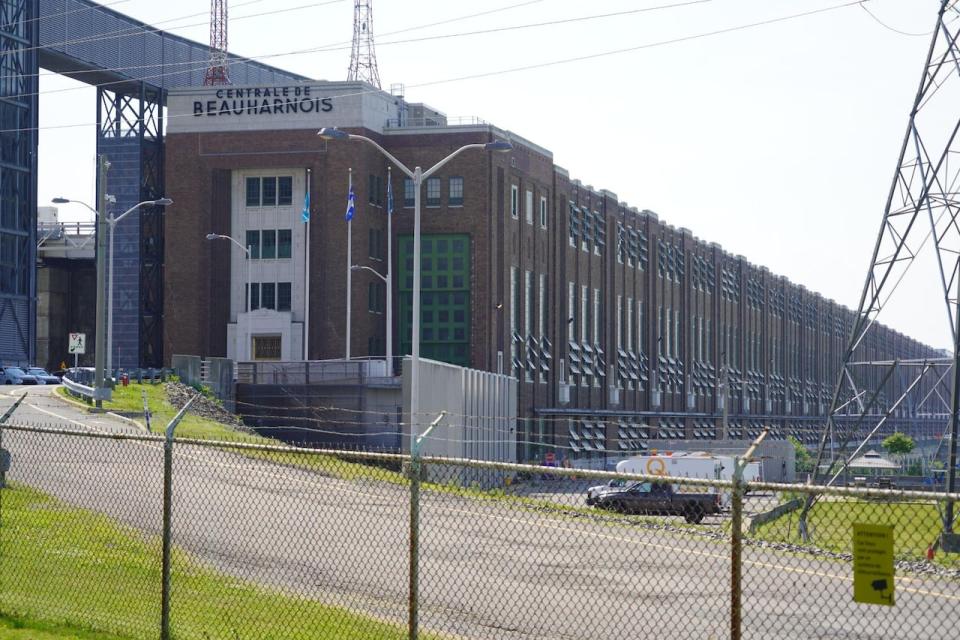On a stretch of the St. Lawrence River, just southwest of Montreal, the steady hum of turbines reverberates through the air.
Every second, eight million litres of water rush through the Beauharnois Generating Station — enough to fill three Olympic-sized pools — producing energy to power almost 400,000 homes.
Quebec is a hydroelectric powerhouse, with 61 generating stations in rivers and reservoirs across the province, and in a normal year, it’s the top exporter of electricity in the country.
With demand expected to surge in the coming years both in Canada and in the northeast U.S., will Hydro-Quebec be able to keep up?
Experts forecast a period of rapid growth in electricity consumption to meet the growing needs of data centres, factories and residential consumers, positioning Quebec as what Premier François Legault has called “the battery of North America.”
But the public utility’s reservoir levels fell far below average in 2023, during an unusually hot and dry year across Canada, raising concern about the future of hydro electricity in the face of climate change.

The Beauharnois Generating Station has 36 turbines, one of 61 generating stations in rivers and reservoirs across the province. (Benjamin Shingler/CBC)
Overall, exports to the U.S. from Canada fell nearly 25 per cent last year, to the lowest level since 2016.
In its annual report, Hydro-Quebec blamed “scant snow cover” as well as “lower-than-usual spring runoff and modest summer and fall precipitation in northern Quebec” for the lower than usual “inflows to the company’s large reservoirs.”
That meant the public utility was forced to cut back exports last year to 23 Terawatt hours (TWh) — about nine per cent less than the year prior.
B.C. Hydro was even worse off, and was forced to import more power from the U.S. last year because of dry conditions. Manitoba’s hydro production also dropped by 12 per cent.
Despite these challenges, demand is expected to surge in the years ahead.


Beauharnois was at one time the largest power plant in the country. Construction began in 1929. (Louis-Marie Philidor/CBC)
Fluctuation expected, says utility
During a recent tour of Beauharnois, Hydro-Quebec spokesperson Lynn St-Laurent said fluctuation in water levels is something the public utility has “been monitoring for several decades” and is prepared to deal with.
She pointed to 2014 research that suggests Quebec could receive more precipitation as the world warms.
“There were lower levels in 2023 for certain, but water inflow variability is actually very well understood in the hydropower industry,” said St-Laurent. She said there will be years where “water inflows will decrease — because there is variability — but the general trend is to see them increase over the next decade.”
Christopher McCray, a climate simulations specialist at Ouranos, a Quebec climate research group, said models show more annual precipitation in Quebec in the decades to come — but more variability, too.
“There’s definitely a risk of having periods where there’s less water availability,” he said. McCray said there will likely be drier, hotter periods that last longer, which “will potentially reduce the water levels in lakes and rivers.”


Hydro-Quebec’s Lynn St-Laurent says fluctuation in water levels is something the public utility has ‘been monitoring for several decades’ and is prepared to deal with. (Louis-Marie Philidor/CBC)
Given the expected increased demand and volatility, experts say the public utility needs to further expand its electricity sources, and improve its connections with other jurisdictions to better handle demand.
François Bouffard, an associate professor of engineering at McGill University in Montreal who follows the public utility closely, said last year’s low water levels underscore the need for a better connected grid. To achieve this will require vast developments and upgrades to our electricity transmission infrastructure, he said.
“We’re not even just talking about Quebec, we’re talking about that at the continental scale,” he said in an interview. “It might be sunny somewhere, it might be windy somewhere else, but demand might not be so high in that area. If we have transmission, we can actually funnel that energy where it’s actually needed.”


Workers perform maintenance on the Beauharnois Generating Station. Improvements to existing dams is part of Hydro-Quebec’s attempt to increase electricity production. (Louis-Marie Philidor/CBC)
Where will the power come from?
Hydro-Quebec has already taken steps to increase supply, with more wind farms planned, as well as upgrades to existing hydro dams and potentially adding new ones.
New transmission lines to the United States are also in the works, with connections to both New England and New York City. St-Laurent said all jurisdictions will benefit from bi-directional lines, so that when wind and solar production are down on calm, cloudy days, Quebec can provide hydropower to the United States.


François Bouffard is an associate professor of engineering at McGill University in Montreal. (Louis-Marie Philidor/CBC)
When those renewables are at peak, Quebec can take back more energy.
“What we mean is that our hydropower resource is a very flexible technology. It can be providing that constant energy, but it’s also dispatchable on demand,” St-Laurent said.
“We can essentially stop and start up our water turbines that spin the water and produce the electrons at the flick of a switch pretty much. And so this flexibility allows us to be a perfect resource to balance those intermittent energy resources that are wind and solar.”

